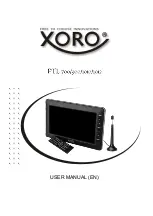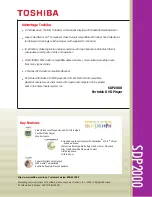
English
Customer Hotline 1-800-445-1805
3
SAFETY AND OPERATION RULES
S
SA
AF
FE
ET
TY
Y IIN
NF
FO
OR
RM
MA
AT
TIIO
ON
N
WARNING indicates a
potentially hazardous situation
which, if not avoided, could
result in death or serious injury.
CAUTION indicates a potentially
hazardous situation which, if not
avoided, may result in minor or
moderate personal injury, or
property damage.
WARNING - Failure to follow these instructions
and warnings may result in death, personal
injury, or property damage.
1. Read carefully and understand operator manual
prior to operation of this product. Follow all
warnings and instructions.
2. Know your equipment. Consider the applications,
limitations, and the potential hazards specific to
your unit.
3. Equipment must be placed on a firm, supporting
surface.
4. Load must be kept within rating stated on
generator nameplate. Overloading will damage
the unit or shorten its life.
5. Engine must not be run at excessive speeds.
Operating an engine at excessive speeds increases
the hazard of personal injury.
Do not tamper with parts which may increase
or decrease the governed speed.
6. To prevent accidental starting, always remove the
spark plug or cable from the spark plug before
maintaining the generator or engine.
7. Units with broken or missing parts, or without
protective housing or covers, should never be
operated. Contact your service center for
replacement parts.
8. Units should not be operated or stored in wet or
damp conditions or on highly conductive
locations such as metal decking and steel work.
9. Keep the generator clean and free of oil, mud and
other foreign matter.
10. Extension cords, power cords, and all electrical
equipment must be in good condition. Never
operate electrical equipment with damaged or
defective cords.
11. Store the generator in a well ventilated area with
the fuel tank empty. Fuel should not be stored near
the generator.
12. Your generator should never be operated under
these conditions:
a. Uncontrolled change in engine speed.
b. Electrical output loss.
c. Overheating in connected equipment.
d. Sparking.
e. Damaged receptacles.
f. Engine misfire.
g. Excessive vibration.
h. Flame or smoke.
i. Enclosed compartment.
j. Rain, snow or inclement weather. Do not let
the unit get wet when operating.
13. Check the fuel system periodically for leaks or
signs of deterioration such as chafed or spongy
hose, loose or missing clamps, or damaged tank or
cap. All defects should be corrected before
operation.
14. The generator should be operated, serviced, and
refueled only under the following conditions:
a. Start and run the generator outdoors. Do
not run the generator in an enclosed area,
even if doors or windows are open; avoid
areas where vapors may be trapped, such as
pits, garages, cellars, excavations and boat
bilges. DANGER - CARBON MONOXIDE
HAZARD: The engine exhaust contains
carbon monoxide, a poisonous, odorless,
invisible gas which, if breathed, may cause
death or serious personal injury. If you start
to feel sick, dizzy or weak while using the
generator, shut it off and get to fresh air
right away; you may have carbon monoxide
poisoning.
b. Good ventilation for cooling. Air flow and
temperatures are important for air cooled
units. Temperatures should not exceed 104º F
ambient (40º C).
c. Refuel the generator in a well lighted area.
Avoid fuel spills and never refuel while the
generator is running. Allow engine to cool for
two minutes prior to refueling.
DANGER indicates a potentially
hazardous situation which, if not
avoided, WILL result in death or
serious injury.




































